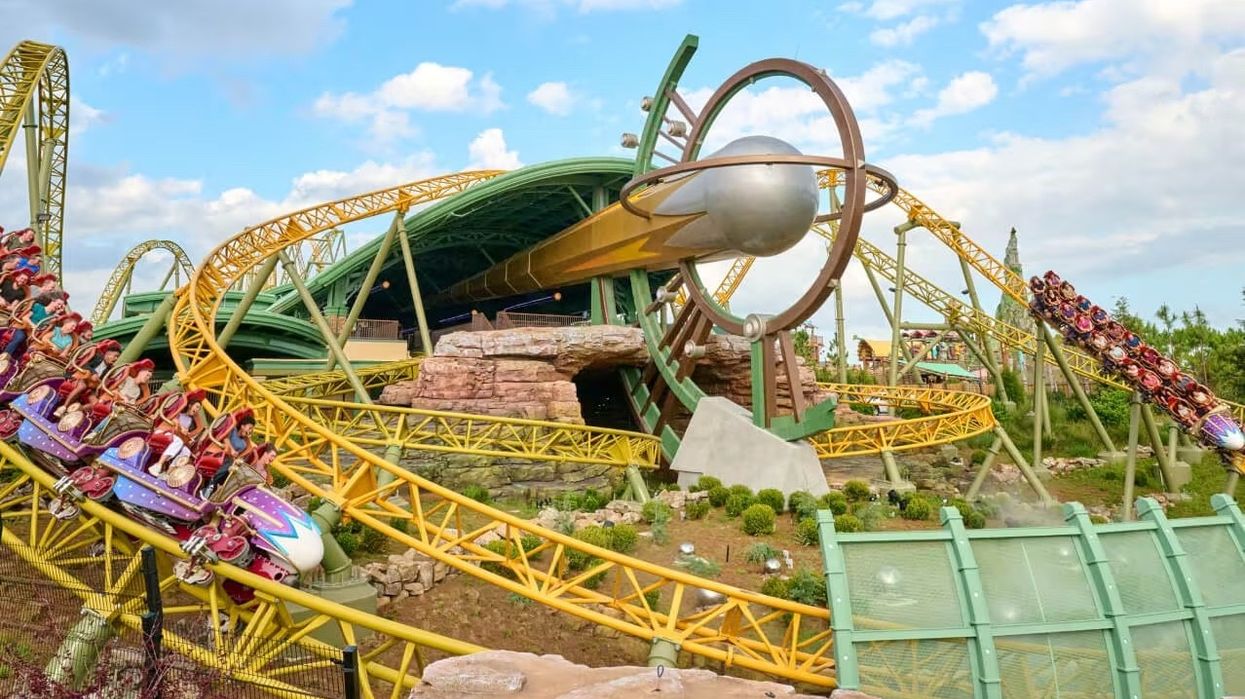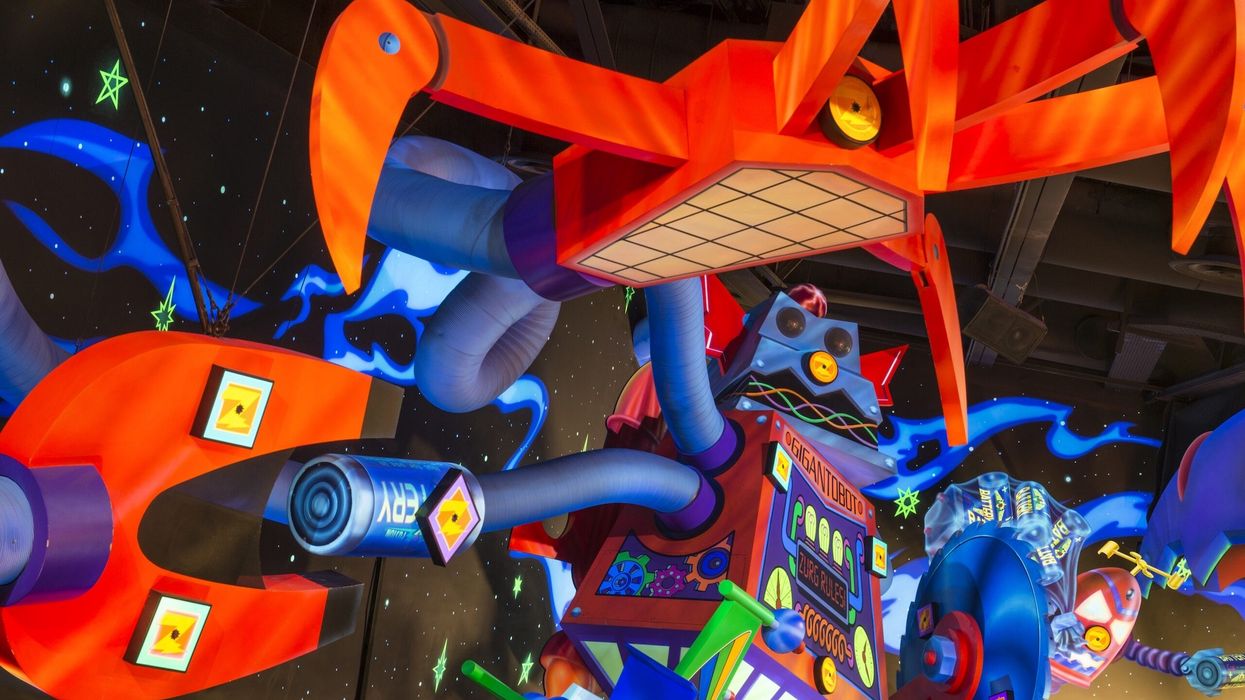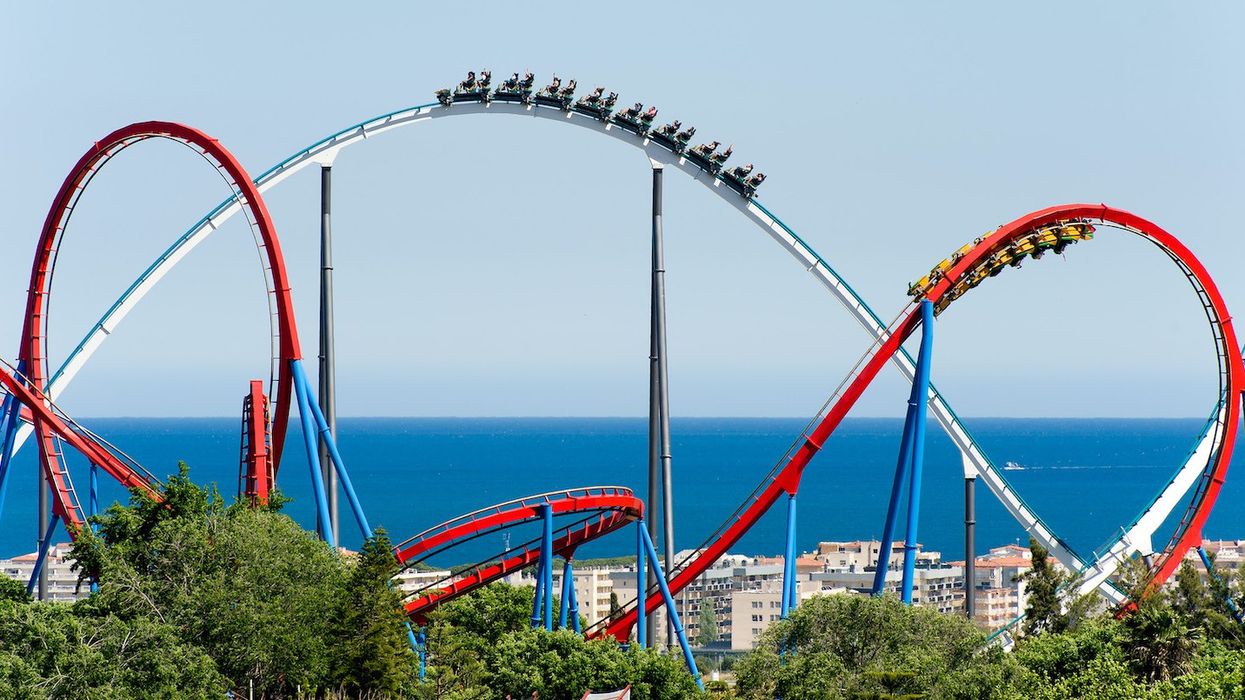“When I arrived, we were a federation of local jewels – each with its own rhythm and culture. Today, we are a single orchestra, playing in harmony while preserving each park’s unique melody.”

With over 30 individual attractions on two continents, “diversification is our resilience,” says Ferracci.
“The combination of attraction parks, water parks, animal parks and indoor attractions gives us a good balance. The diversity of locations is also very useful. The conditions in Scandinavia are quite different to Spain, for example, and this summer the weather was extremely good in Scandinavia.”
In a season that saw more challenging trading conditions elsewhere in Europe, Ferracci says that Parques Reunidos has nevertheless increased EBITDA (pre-tax earnings) in 2024, achieving a revenue margin above 31%.
This was due in part to strong demand for various parks’ Halloween and, so far at the time of writing, Christmas seasons.
Parks with potential
Parques Reunidos claims to be the second-largest regional park operator in Europe.
It has identified eight sites it believes have the most significant development potential, which are Parque Warner Madrid (and Warner Beach) and Parque de Atracciones de Madrid in Spain, Tropical Islands and Movie Park in Germany, Mirabilandia (and Mirabeach) in Italy, Slagharen in the Netherlands, Bobbejaanland in Belgium, and Tusenfryd in Norway.

“Some of these parks have achieved outstanding results – whether through guest satisfaction, innovation or financial performance,” says Ferracci.
“But for me, performance means more than numbers. It’s the parks that dare to test, to learn, to care deeply for guests and teams – and we have many.”
Parques Reunidos’ Spanish roots
Parques Reunidos (‘Parks United’) traces its roots to 1967, with the opening of Parque de Atracciones Casa de Campo de Madrid. For many years, the group had its headquarters inside the amusement park now known simply as Parque de Atracciones de Madrid.
The wider Casa de Campo is also home to the Zoo Aquarium de Madrid.
Just outside the Spanish capital, in San Martín de la Vega, sits Parque Warner Madrid. Founded as Warner Bros. Movie World in 2002, it’s been part of the Parques portfolio since 2006.
It and the neighbouring Warner Beach water park (added in 2014) are now the group's busiest sites, with 2.2 million annual guests.
Elsewhere in its home country, the group operates 10 additional attractions, including five Aquapolis water parks.
“Historically, Spain has been our most significant country,” says Ferracci. “The Spanish parks are now 36% of my revenue. But I can tell you that Germany is very close at 33%.”
The sale of Belantis in Leipzig earlier this year to Compagnie des Alpes has removed one site from the Parques Reunidos map. However, it still does good business at Tropical Islands outside Berlin.
Meanwhile, Movie Park Germany in the populous state of Nord Rhine-Westphalia enjoys a central location to the rest of the country and also lies within easy reach of the Netherlands and Belgium.
Pascal Ferracci’s pivot to leisure
Now 56 years of age, Pascal Ferracci’s own roots are more southerly. His family name originates from Corsica, but he grew up in Africa. Born in Djibouti, he also spent part of his childhood in Senegal and Mali.
As well as France and now Spain, he lived for three years in the Netherlands while working for Center Parcs Europe. There, he served as both CEO and chairman of the board, as well as in other positions within the wider Pierre & Vacances – Center Parcs group.
Starting his career as an auditor at PwC, he says he has always been attracted to the leisure industry.
“Stepping into it in 2000 with Center Parcs felt like a natural step. I’m proud I made that decision. This is an industry that creates real moments of joy and connection, and being able to contribute to that is incredibly fulfilling.”
 Nickelodeon Land at Parque de Atracciones de Madrid
Nickelodeon Land at Parque de Atracciones de Madrid
His appointment as chief executive in September 2020 followed a brief stint by Jesús Fernández, and before that, an approximately six-year term as CEO by José Díaz. Much of the Madrid management team has also changed over the past five years.
Samantha Laurent joined as the chief people and organisation officer in February 2024.
“When I arrived at Parques Reunidos, we were navigating significant cultural change,” she says. "I wanted our leaders to pause and rediscover what truly drives them, not just professionally, but personally.”
On this note, Ferracci enjoys swimming, horse riding and singing in his free time.
Streamlining the portfolio
The Spanish firm reached across the Atlantic in 2007 to acquire Palace Entertainment, and its most recent acquisition, in December 2021, was Adventureland in Iowa.
The Palace Entertainment name was retained for the US operation, and further properties were added to the Palace portfolio, including Dutch Wonderland, Noah’s Ark Waterpark and Miami Seaquarium.
In May 2025, 24 attractions were transferred to Herschend Family Entertainment under a deal announced with the Silver Dollar City and Dollywood operator in March.
Just recently, former chief operating officer John Reilly left to become the new president and CEO of Six Flags.
 Raging Waters
Raging Waters
In Australia, Parques retains ownership of Raging Waters (formerly Wet ’n’ Wild) in Sydney, but otherwise is now purely a European player.
“The sale of Palace Entertainment has given us sharper focus,” says Ferracci.
“Europe is our home market. It’s where our brand equity, operational expertise and community impact are strongest. With a streamlined portfolio, we are now even more agile – focusing investments where we can deliver the greatest long-term value.”
Mergers, acquisitions and the Middle East
How the disposal of Palace Entertainment will impact Parques Reunidos' ranking as the world’s 10th largest operator by attendance (according to the Theme Index) remains to be seen.
Nevertheless, the group entertained 14 million visitors across its portfolio in 2024.
It was under the reign of Fernando Eiroa, now with Dubai Holding, that the company was most active on the acquisition trail. Not only did it pick up Palace and various parks in Europe, but it also entered into a deal with Dubai Parks and Resorts to manage Motiongate and Bollywood Parks Dubai.
 Mirabilandia's iSpeed coaster
Mirabilandia's iSpeed coaster
Since that agreement ended, the latter has been relaunched as Real Madrid World. Ferracci says Parques Reunidos has no more immediate plans in the Middle East. “I do not think that’s where the significant added value can be in future.”
Might the group be ready to hit the acquisition trail again in Europe?
Ferracci confirms that he has a mergers and acquisitions team. “We remain open and selective”. There are, he adds, “some interesting family businesses.
"That said, organic growth remains our priority. We have a rich pipeline of digital, experiential and sustainability-driven initiatives that can scale across our network and deliver value without adding complexity.”
Data and digitisation
Attractions industry professionals in the audience for his Leadership Breakfast address at IAAPA Expo Europe in Barcelona in September may remember the metaphor Ferracci used to describe Parques Reunidos’ transformation, referencing Kintsugi – the Japanese art of repairing pottery with gold lacquer.
Picking up the theme now, he says, “Instead of hiding the cracks, we honour them – because they make the piece stronger and more beautiful. That is Parques Reunidos’ story.
"We did not erase our differences; we connected them. We built a purpose-led, data-informed, human-centred company — one that measures success not only in EBITDA, but in smiles, memories and meaning.”
 Parque de Atracciones de Madrid
Parque de Atracciones de Madrid
Over the past five years, the company has invested €65 million in technology.
“That’s a lot of money,” says Ferracci. “You could buy some very nice rides and attractions with this money. But we have completely transformed the technology environment. Now every park has access to the same data, and we are all working to the same KPI [key performance indicators].”
A key driver of the digitalisation strategy is chief digital officer Óscar García, who works alongside chief customer officer Vicente Bosque, who is also responsible for global revenue strategy, ticketing, marketing, sales, and eCommerce.
Joining Parques Reunidos in 2021, Bosque previously held leadership roles in commercial management across Southern Europe and, later, across all of Europe.
Parques Reunidos and IP
Parques Reunidos continues to operate Nickelodeon Adventure at the Lakeside shopping mall near London.
Whilst indoor attractions of the same name in Madrid and Murcia are no longer part of its portfolio, the children’s entertainment brand remains important to some of the group’s larger sites.
Movie Park Germany, Parque de Atracciones de Madrid, and, since this year, Mirabilandia in Italy now all feature a Nickelodeon Land. As of 2027, Bobbejaanland will have one too.
Ferracci sees further scope for Nickelodeon at Mirabilandia, noting that the IP would be a strong fit for the resort’s upcoming lodging development.
 Ferracci at the ribbon-cutting ceremony for Nickelodeon Land at Mirabilandia, with (left) Marie Marks, senior VP of global experiences for Paramount and (cutting the ribbon) Sabrina Mangina, GM at Mirabilandia
Ferracci at the ribbon-cutting ceremony for Nickelodeon Land at Mirabilandia, with (left) Marie Marks, senior VP of global experiences for Paramount and (cutting the ribbon) Sabrina Mangina, GM at Mirabilandia
This activity follows the announcement in April of a new strategic partnership with Nickelodeon’s parent company, Paramount, which will lead to the realisation of new immersive experiences across various parks.
Two projects that have already come to fruition are the horror mazes Paranormal Activity: Next of Kin at Bobbejaanland and the A Quiet Place-branded maze at Movie Park Germany.
As the highlight of its 2026 season, the German park will relaunch its former Lost Temple immersive tunnel, featuring exclusive Paramount content.
With this addition, along with existing attractions such as the Star Trek: Operation Enterprise roller coaster, Movie Park will further consolidate its “Hollywood in Germany” status.
In addition to its various Paramount licences, Parques Reunidos also has an agreement to use Warner Bros. IP at Parque Warner Madrid and Warner Beach. Ferracci would like to see this extended to any future accommodation at the Spanish site.
Parques and accommodation
Along with Mirabilandia, where themed lodges and boat houses are being planned, Movie Park Germany and Parque Warner Madrid are among the larger Parques Reunidos properties currently without any overnight facilities.
“We provide accommodation with external partners in Madrid,” says Ferracci. “But that means we are providing only beds and not the true experience attached to the Warner Bros. content.”
Parks that already can accommodate guests overnight include Selwo Aventura in Spain with its Selwo Lodge Hotel, plus Slagharen in the Netherlands, where Parques Reunidos has expanded the holiday village established by the park’s founding Bembom family.
The company also manages the SoBlue Hôtel, which neighbours the Aquasplash water park and an amusement park from another operator in the French Riviera resort of Antibes.
Somewhere where accommodation really makes the rest of the operation tick is Tropical Islands. Built inside a former zeppelin hangar, this 600-hectare indoor waterpark sits about 70km south of the German capital.
Founded by a Malaysian investor, it has been under Parques Reunidos’ control since late 2018 and now ranks as its second-busiest property, with 1.2 million annual visits.
From safari tents to lodges and bungalows, overnight accommodation is key to its around-the-clock operating schedule.
One of the newest additions is the OHANA hotel, which Ferracci describes as, “more thematised than what we used to do at Parques Reunidos.”
 Tropical Islands OHANA hotel
Tropical Islands OHANA hotel
He believes Tropical Islands has the potential to add as many as 1,000 additional bungalows.
Sustainable growth
“At Parques Reunidos, the future of growth is responsible growth,” says Ferracci.
"For us, sustainability is not a department – it’s a leadership choice. Now you might say, ‘Okay, Pascal, everybody is telling me that’. But we feel that sustainability is a long-term driver of value creation.”
“Guests increasingly seek meaning in leisure,” he adds.
"They want connection, authenticity and responsibility. Those who can combine joy with conscience will lead the next era of our industry. Climate change, inflationary pressures and changing guest expectations shape how we operate.”
Ferracci is proud of the fact that “We became the first regional park operator with a science-based, targets validated decarbonisation roadmap, achieved 100% renewable electricity since 2021, and earned CDP A [environmental disclosure] leadership recognition.”
Accessibility and inclusion are encouraged across all Parques Reunidos sites.
 Elephants at Blackpool Zoo
Elephants at Blackpool Zoo
However, the group’s CEO believes its animal parks – including Blackpool Zoo and Bournemouth Oceanarium in the UK; Selwo Aventura, Faunia, Atlantis Aquarium Madrid, and Zoo Aquarium de Madrid in Spain; and Germany’s Weltvogelpark Walsrode – contribute even further to the greater good.
“These parks integrate biodiversity conservation directly into their business model,” says Ferracci.
“Every visit supports breeding programmes, habitat restoration and education. We see our animal parks not as attractions, but as guardians of wonder. Places where children fall in love with the natural world, and adults are reminded to protect it."
Delivering premium experiences and human emotions
Like other operators, Parques Reunidos has been experimenting with new revenue streams by delivering premium experiences to guests willing to pay extra for the privilege.
At Parque Warner Madrid, for example, those watching the park’s night show have the option of doing so from a VIP area where they can enjoy dinner and stay until midnight.
During the same park’s Halloween Scary Nights, on some dates, the gates don’t close until 3 or 4 in the morning (due to Spanish social habits), and there are premium scare mazes that require an additional admission fee. “What I call à la carte mazes,” says Ferracci, “innovative and very high level.”
 Tusenfryd
Tusenfryd
However, stresses the Parques Reunidos CEO: “Not everything has to be premium. In order for people to revisit our parks, they should have thrills and emotions they cannot experience elsewhere.
"We are in the family market, and for me, family is not only your close family. It could be friends, clubs, or any group that enables you to reconnect with human emotions. This is what people are missing in their daily lives.”
All images kind courtesy of Parques Reunidos








 TM Lim and Adam Wales
TM Lim and Adam Wales









 Toby Harris
Toby Harris Hijingo
Hijingo Flight Club, Washington D.C.
Flight Club, Washington D.C.
 Flight Club Philadelphia
Flight Club Philadelphia Flight Club Philadelphia
Flight Club Philadelphia Bounce
Bounce Hijingo
Hijingo Bounce
Bounce
 Fernando Eiroa
Fernando Eiroa











 Nickelodeon Land at Parque de Atracciones de Madrid
Nickelodeon Land at Parque de Atracciones de Madrid Raging Waters
Raging Waters  Mirabilandia's iSpeed coaster
Mirabilandia's iSpeed coaster Parque de Atracciones de Madrid
Parque de Atracciones de Madrid Ferracci at the ribbon-cutting ceremony for Nickelodeon Land at Mirabilandia, with (left) Marie Marks, senior VP of global experiences for Paramount and (cutting the ribbon) Sabrina Mangina, GM at Mirabilandia
Ferracci at the ribbon-cutting ceremony for Nickelodeon Land at Mirabilandia, with (left) Marie Marks, senior VP of global experiences for Paramount and (cutting the ribbon) Sabrina Mangina, GM at Mirabilandia Tropical Islands OHANA hotel
Tropical Islands OHANA hotel Elephants at Blackpool Zoo
Elephants at Blackpool Zoo  Tusenfryd
Tusenfryd
 Andrew Thomas, Jason Aldous and Rik Athorne
Andrew Thomas, Jason Aldous and Rik Athorne







